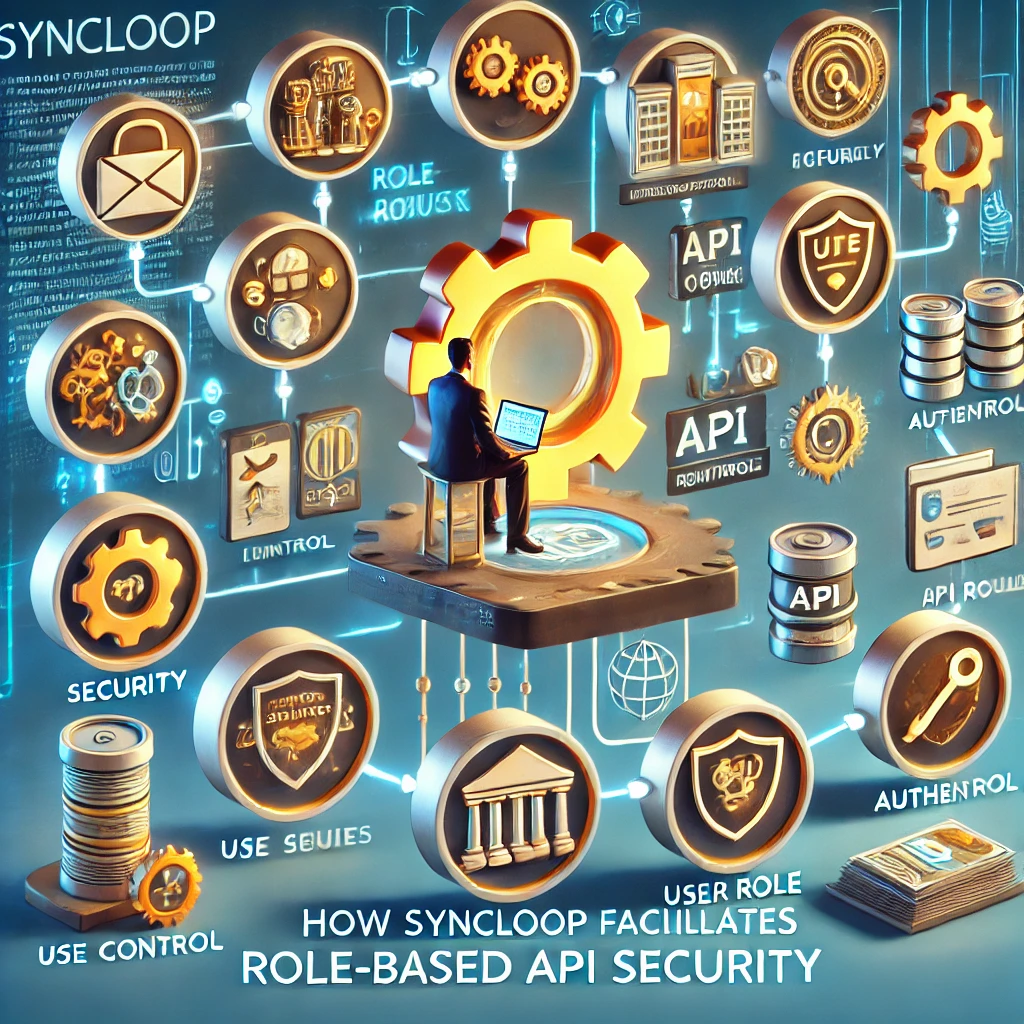How Syncloop Facilitates Role-Based API Security

This blog explores how Syncloop facilitates role-based API security, its core features, and best practices for leveraging RBAC in your API workflows.
The Importance of Role-Based API Security
RBAC is a framework that restricts system access to authorized users based on predefined roles. This approach enhances security by:
- Minimizing Risks: Reducing the potential for unauthorized access or data breaches.
- Improving Compliance: Helping organizations meet regulatory requirements like GDPR, HIPAA, and SOC 2.
- Simplifying Management: Centralizing permissions to make access control more manageable.
- Enhancing Flexibility: Allowing granular permissions tailored to specific roles and responsibilities.
How Syncloop Facilitates RBAC
Syncloop provides a comprehensive set of features to implement and manage role-based security for APIs:
1. Role Assignment
Syncloop allows developers to define roles (e.g., admin, user, viewer) and assign them to specific API consumers or users. These roles determine access to API endpoints and data.
2. Granular Permissions
With Syncloop, permissions can be defined at multiple levels, such as:
- Endpoint-specific permissions.
- Data-level permissions (e.g., access to specific fields or datasets).
- Method-based permissions (e.g., read, write, delete).
3. Authentication Integration
Syncloop supports OAuth 2.0, OpenID Connect, and API keys, ensuring secure and seamless user authentication tied to roles.
4. Dynamic Policy Enforcement
Policies can be dynamically applied based on user roles, contexts, or conditions (e.g., time of access, IP restrictions).
5. Centralized Access Control
Syncloop centralizes access management, allowing administrators to update roles and permissions across all APIs from a single interface.
6. Audit and Monitoring
Comprehensive logging and monitoring tools provide visibility into API access, enabling audits and detection of unauthorized activities.
Benefits of Using Syncloop for Role-Based API Security
1. Enhanced Security
Granular permissions ensure that users can only access data and operations necessary for their roles, reducing risks.
2. Simplified Access Management
Centralized RBAC management in Syncloop streamlines updates and minimizes administrative overhead.
3. Increased Flexibility
Dynamic policies allow organizations to adapt role definitions and permissions to evolving business requirements.
4. Improved Compliance
Syncloop helps meet regulatory requirements by providing detailed access logs and fine-grained control over data access.
5. Scalability
RBAC configurations in Syncloop scale effortlessly with the growth of APIs, users, and roles.
Real-World Applications of RBAC in Syncloop
1. Financial Services
RBAC ensures that sensitive financial data is accessible only to authorized personnel, such as limiting payment processing APIs to specific roles.
2. Healthcare Systems
In healthcare, Syncloop’s RBAC restricts access to patient records based on roles, ensuring HIPAA compliance and data privacy.
3. E-Commerce Platforms
E-commerce businesses use RBAC to control access to inventory management, customer data, and order processing APIs.
4. SaaS Applications
SaaS providers implement RBAC to differentiate between admin, user, and viewer roles, ensuring appropriate access levels for multi-tenant environments.
Best Practices for Role-Based API Security with Syncloop
- Define Clear Roles and Responsibilities: Start with well-defined roles that align with business and security requirements.
- Implement Least Privilege: Grant users the minimum access necessary to perform their tasks, reducing exposure to sensitive data.
- Use Granular Permissions: Define permissions at both endpoint and data levels for precise control.
- Enable Continuous Monitoring: Leverage Syncloop’s logging and monitoring to track API access and detect anomalies.
- Integrate with Authentication: Use OAuth 2.0 or OpenID Connect for secure role assignments during user authentication.
- Regularly Review Permissions: Periodically audit roles and permissions to ensure they remain aligned with current needs.
Conclusion
Role-based API security is essential for safeguarding sensitive data and ensuring that APIs operate securely and efficiently. Syncloop’s robust RBAC features make it easy to define, enforce, and manage roles across complex API ecosystems. By integrating centralized access control, granular permissions, and dynamic policies, Syncloop empowers organizations to protect their APIs and data with confidence.
Whether you’re building APIs for healthcare, finance, or SaaS, Syncloop ensures your security framework is flexible, scalable, and compliant. Embrace Syncloop to simplify role-based API security and enhance trust in your digital ecosystem.
A conceptual illustration of an API security model, highlighting role assignments, permissions, and centralized access control powered by Syncloop.
Back to Blogs